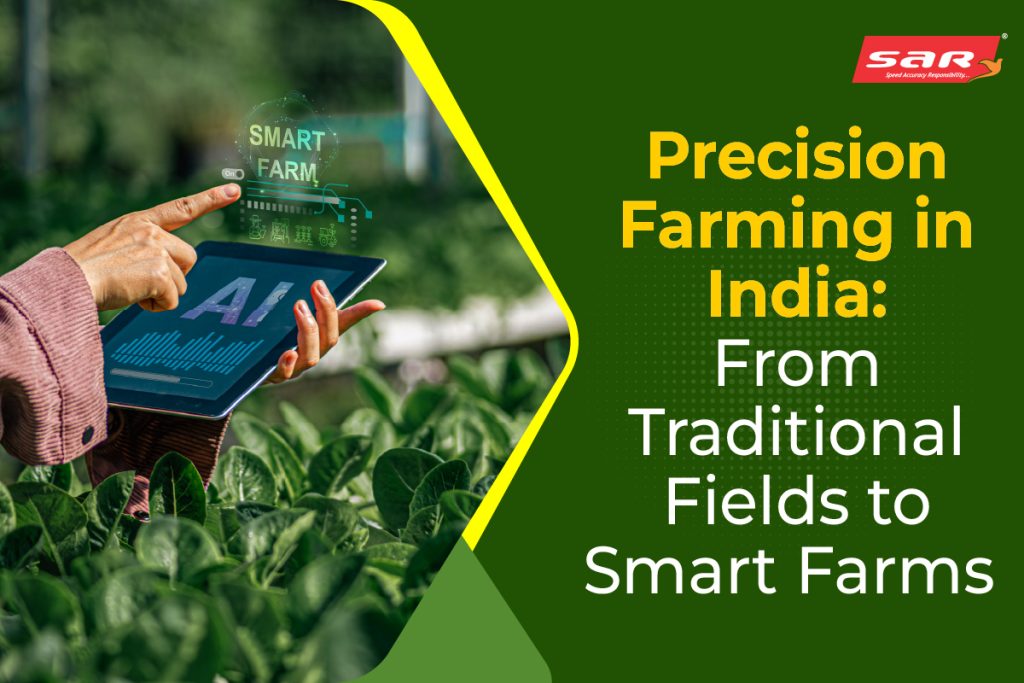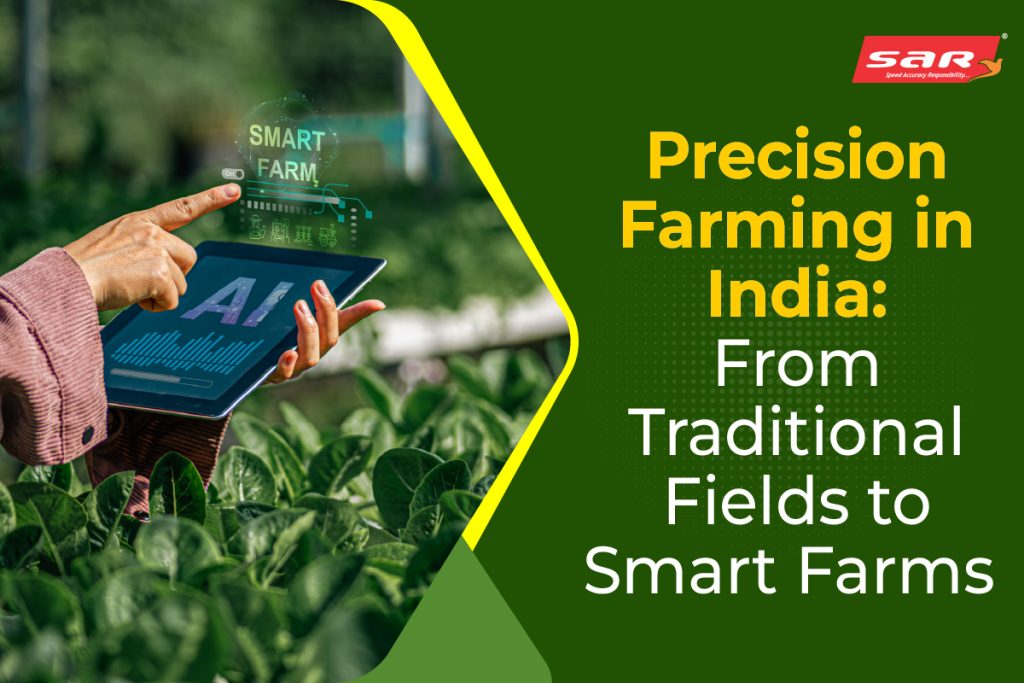
Introduction: A New Era for Indian Agriculture
India, a deeply inherent country in the agricultural tradition, is now embracing digital revolution in its areas. A technology-operated approach to the accurate farming-agricultural-is changing how farmers grow crops, manage inputs, and monitor yields and that is Precision Farming in India. Unlike traditional practices, which apply equal treatment throughout the region, accurate cultivation considers variability in soil, weather, water and crop needs. This enables making smart decisions through data, tools and connectivity.
From the mechanized wheat fields of Punjab to the high-value horticulture areas of Maharashtra, the exact farming in India is gradually, but it’s turning traditional fields into smart fields. This is a reply to climate change concerns, reducing resources and reducing profits – especially relevant to this generation that farmers are looking for efficiency, stability and profitability.
What is Precision Farming?
Precision Farming, also known as satellite farming or site-specific crop management (SSCM), is a modern agricultural method that uses information technology and various types of equipment-GPS, GIS, Sensers, Drone, IOT, and AI-intra-maidan to inspect, measure and answer. In simple terms, this means giving the right amount of input (water, fertilizers, pesticides) at the right time and right place, instead of treating the entire area.
This functioning aligns fully with India’s needs: high population pressure, availability of per capita land, climate risk, and increasing demand for quality production.
Technology Behind Precision Farming in India
The Precision farming in India system is made on many interconnected technologies:
- Global Positioning System (GPS): Able at accurate field mapping and tool guidance.
- Geographical Information System (GIS): Helps in spatial analysis of soil, topography and crop data.
- Remote sensing and drone: Provide air images to detect crop health, insect infections and water stress.
- Soil and crop sensors: Measure pH, moisture, salinity, temperature and nutritional levels in real time.
- Convertible Rate Technology (VRT): Discriminated input application allows depending on crop or soil needs.
- IOT and AI algorithms: Analyze data for future insight and actionable decisions.
- Mobile Apps and Farm Management Software: Help farmers in tracking operations, receiving alerts and managing inventory.
In India, companies such as Fasal, Cropin, Dehat and Agnext are deploying these devices on the ground, while large agribusinesses are integrating them in their supply chains.
Why Precision Farming is Vital for India’s Next Generation Farmers
This generation of farmers is facing unprecedented challenges: water scarcity, expensive labour, rising fertilizer costs, irregular rainfall, and high benefits from small plots. Here is how accurate farming helps:
- Resources increase efficiency The use of water in drip-irrigated accurate fields has increased by more than 40%. The nutrients are no longer ruined through the blanket application – only targeted feeding is done based on real data.
- Improves yield and crop quality Accurate farming ensures optimal crop health by reducing stress and improving uniformity. For example, in tomato and grape cultivation, GPS-directed prohibition has increased the yield of export-grade by 15–20%.
- Reduces input cost by avoiding excessive use of seeds, fertilizers, and pesticides, Precision farming in India considers input costs significantly. Smallholder farmers have reported input savings up to 25%.
- Technology-Empowering youth with a career young agriculture-grade and entrepreneurs are adopting Precisin farming in India as a business model. Mobile-based advisory apps, drone services and custom hiring centres are creating rural employment opportunities.
- Climate change competes Along with focusing on customizing each input, accurate cultivation reduces the environmental footprint of agriculture – reduces low runoff, low emissions, and soil fall.
Cases of real use of Precision Farming in India
Precision Farming is already making a difference in many areas:
- Punjab and Haryana: Farmers use laser land levelers and GPS-controlled tractors to sow wheat with millimeters accuracy.
- Maharashtra and Karnataka: Grapes, bananas and pomegranate crops are providing quality produce for accurate fertility and weather irrigation scheduling exports.
- Tamil Nadu: Remote sensing and drone spraying are helping to manage pests more efficiently in sugarcane and cotton fields.
- Andhra Pradesh and Telangana: IOT sensors monitor moisture and control drip irrigation in distance and horticulture areas.
Government support for Precision Farming
Honouring its capacity, the Government of India has initiated several initiatives to promote Precision farming:
- Digital Agricultural Mission (2021–2025): AI, drone and data are to be used to increase agricultural productivity.
- Sub-mission on agricultural mechanization: Provides subsidy for advanced machinery and equipment.
- Soil Health Card Scheme: Soil encourages soil testing and site-specific fertilizer use.
- PM-CUSUM Yojana: Solar energy-operated irrigation for smart farms.
Additionally, states such as Karnataka, Maharashtra and Gujarat are actively promoting accurate farming under their Agritech missions.
Challenges in increasing Precision Farming in India
Despite its promise, widely adopting Precision farming in India faces many obstacles:
- High early costs: Advanced equipment and technology require significant upfront investment.
- Fragmented land holdings: Small farms are beneficial to make beneficial technologies on scale.
- Lack of awareness and training: Many farmers are unaware of profit or fear complexity.
- Limited infrastructure: There is a lack of reliable electricity, internet and efficient manpower in rural areas.
However, collaborative efforts between startups, government bodies and agricultural institutes are helping to remove these obstacles.
Future of Precision Farming in India
The future of precision farming is highly promising:
- Autonomous tractors and robots: AI-operated machines will handle sowing, weeding and harvesting with zero human intervention.
- Predictive Analytics: AI tools will estimate pests, crop diseases and market trends in advance.
- Blockchain in agriculture: Ensures traceability and quality assurance from farm to fork.
- Digital Twin Farms: The virtual replicas of physical farms will follow the results and optimize the decisions.
With India’s push towards digital inclusion, precision farming in India will be witness to the formation of a default system in the next decade – not only an innovation.
Conclusions: From Fields of The Past to Farms of The Future
Precision Farming in India is more than a discussion – it is a lifeline for the agriculture sector. By combining ancient knowledge with moderns equipment, it helps farmers to achieve low, climate change, and high-income stability. Since new techniques become more affordable and accessible, small holders’ farmers who make the backbone of Indian agriculture – will also be involved in the smart farming revolution.
In a country where agriculture feeds more than one billion people and appoints more than half the workforce, Precision farming in India is not just the future – this is the need of the present.


